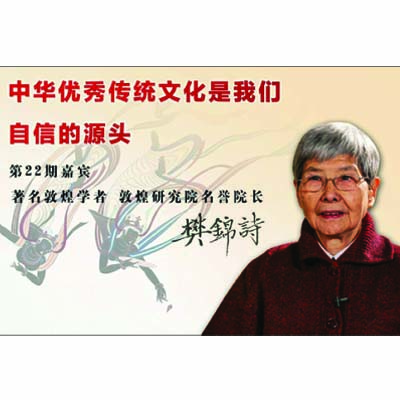If it had not been for archaeologist Fan Jinshi, 79, and her team, the world cultural heritage at Dunhuang Mogao Grottoes (敦煌莫高窟) in a remote Chinese desert might have long been destroyed by sand, weather or humans.
Fan has spent half a century working to preserve the ancient Buddhist wall paintings at Dunhuang, in northwest China’s Gansu province.
The 1,600-year-old Dunhuang Mogao Grottoes are a huge collection of Buddhist art – more than 2,000 Buddha figures and 45,000 square meters of paintings spread among 735 caves. It is China’s first UNESCO World Heritage Site.
To protect the treasures from sand and dampness, Fan and other workers put doors on the caves, planted trees and started monitoring temperature and humidity in the caves. They also control the number of visitors to a maximum of 3,000 tourists each day.
All the sculptures and paintings have been photographed and catalogued online by Dunhuang Academy, to be preserved digitally for future generations. Fan has retired from her post as the Academy’s director but continues her efforts as national political advisor. She has spent International Women’s Day in Beijing for the past 25 years as Chinese People’s Political Consultative Conference typically convened for its annual sessions in early March.
As one of the longest-serving CPPCC members, Fan has raised many proposals for protecting China’s heritage.
Her proposal in 2003 led to the establishment of the Dunhuang Tourism Information Center. The digital center opened to the public in 2014 after 11 years of research, verification, planning and construction. Another proposal resulted in changes to a planned railway line, which she thought would damage the grottoes.





